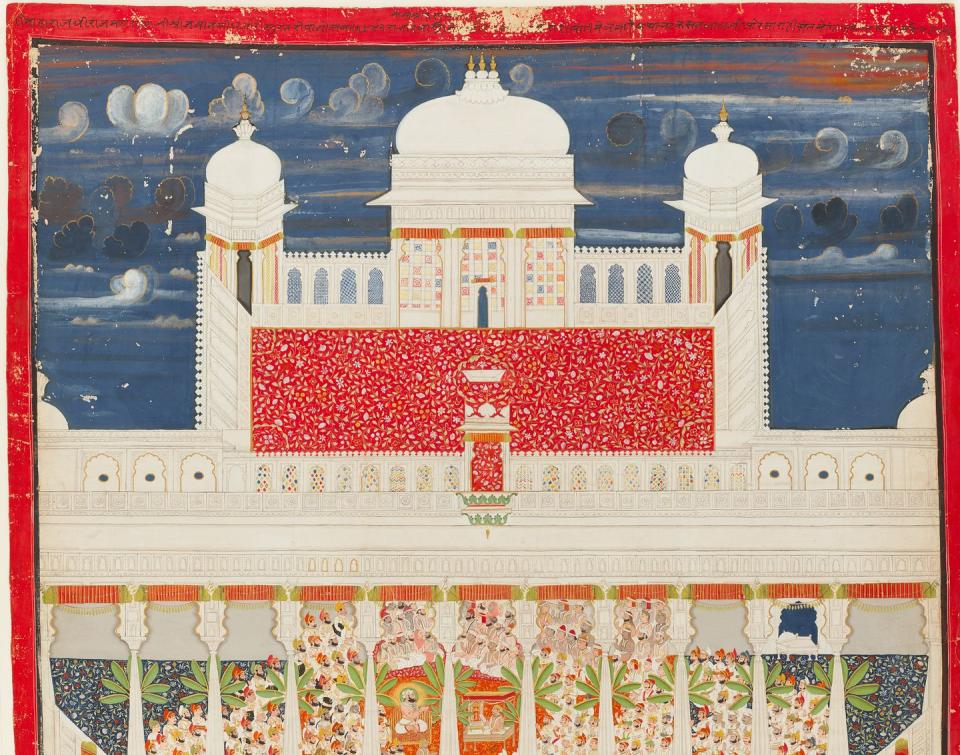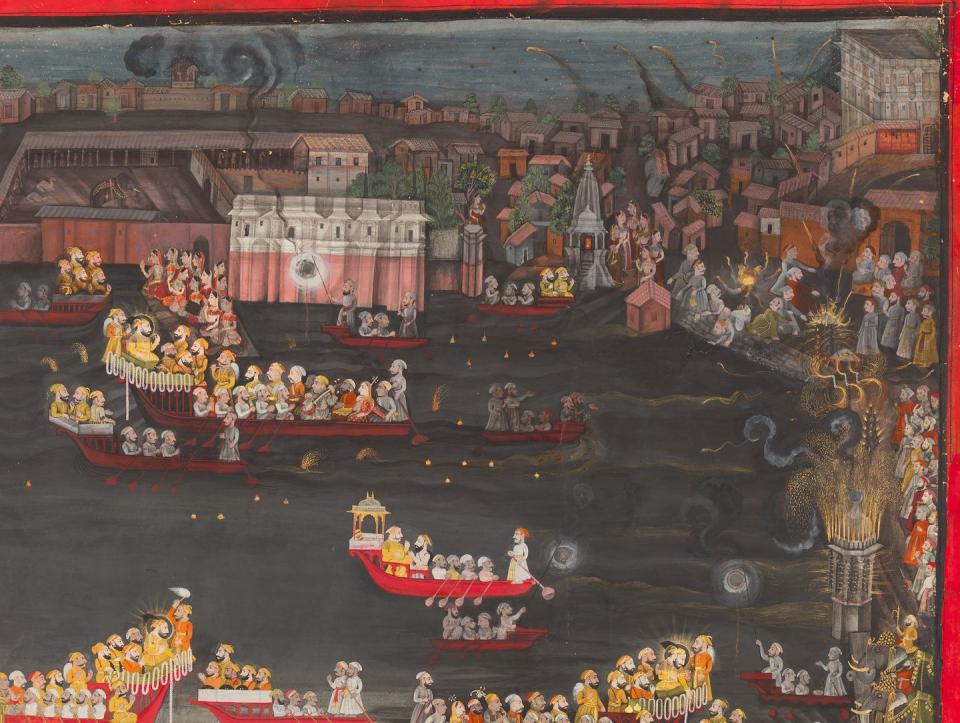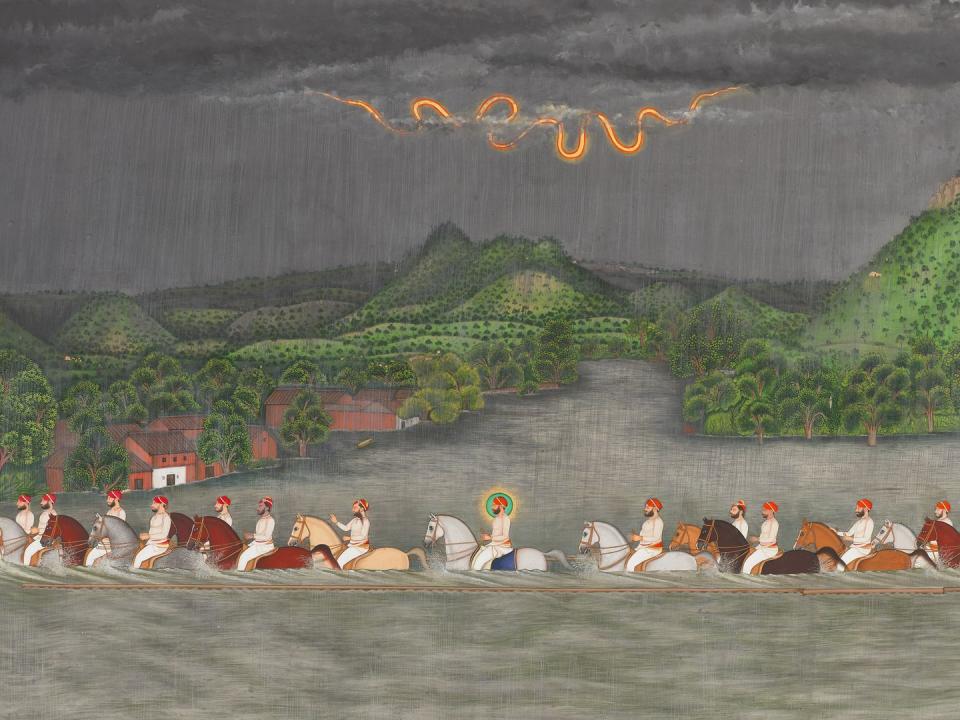The Royal Family of Udaipur Helps Kick off the Smithsonian Museum of Asian Art’s Centennial Year

What is the purpose of a painting? If one had asked Oscar Wilde, he might have argued that a painting should remain purely imaginative or that art needn’t have a purpose. Rainer Maria Rilke might have said art must represent a deeply personal interpretation of something that already exists. And for the 18th century artists in Udaipur, a court in arid northwest India, the purpose of a painting was to not only express, but to celebrate, a lived experiences through the senses. Several centuries later, the works from these artists still echo this point—and now help celebrate the Smithsonian’s National Museum of Asian Art’s centennial year.
In partnership with the City Palace Museum of Udaipur and the Maharana of Mewar Charitable foundation, an exhibition titled A Splendid Land is now on view until May 14, allowing visitors from far and wide to experience the works of Indian artists, including many pieces that have never been seen by the public before.
“Our relationship with the city palace and the Royal Family of Udaipur is incredibly rich,” Dr. Debra Diamond, Curator of South and Southeast Asian Art at the Smithsonian’s National Museum of Asian art tells Town & Country. “They have an incredible philanthropic spirit and an amazing collection that is joyous, wonderful, and exciting.”

The art within the exhibition feels more than just visual. Sure, the works are illustrious and filled with vibrant colors on paper and cloth—an aesthetic feast as one may say. But, collectively, they are cinematic: pulling, tugging, and exciting all five senses. There are not only depictions of the Royal Palace of Udaipur and all of its splendor (though that’s certainly there). One is also exposed to the communities and activities which brought the palace to life. “Visitors really get a sense of palace life. But, it’s not just a simple portrait of the king,” Diamond says. “We have stories of people who are worshiping and people who are farming. You can hear oars dipping into the water as people row boats across the lake. There’s even a moment when a tiger gets close to the king. It is an aesthetic of plentitude.”

This effectively transports viewers into a sort of odyssey throughout the Royal Palace of Udapair. One can place themselves in fields with farmers hard at work. Or imagine crossing the man-made Lake Palace of Udaipur on horseback alongside Maharana Fateh Singh, one of the rulers of Udaipur, during a monsoon.
But, perhaps one works trumps all. Sunrise in Udaipur (1722-23, opaque watercolor and gold on paper, pictured at top) exhibits both the grandeur of the palace and the wondrous skies at sunrise. Rivers of blues and reds illustrate clouds with gold linings while the palace stands proud and tall. It evokes the stillness felt in the early morning, an appreciation for the natural world, and the excitement for what’s to come in the day.

“The exhibition is an example of long-term international collaboration,” Chase F. Robinson, the Director of the National Museum of Asian Art tells Town & Country. “It builds on the National Museum of Asian Art’s history of connecting visitors with South Asian arts and cultures. While it addresses contemporary issues like climate change, it also honors and shares historic traditions.”
A Splendid Land is only one part of the evolution of the Smithsonian National Museum of Asian Art. The organization is also incorporating a multi-sensory experience through technology. Though certainly not as intense as any of the popular, recent Van Gogh immersive experiences, the exhibition also features a soundscape by Amit Dutta in certain rooms that goes along with the settings of the paintings, putting visitors in the headspace to draw their own experiences in a meditative fashion.
The Smithsonion is also expanding its contemporary art exhibitions. A Splendid Land is complemented by a sister show, Unstill Waters, which features contemporary Indian photography, and many of the works explore the cultural attitudes toward natural resources. “As the National Museum of Asian Art enters its next century, we are even more committed to expanding our contemporary collection and placing it in dialogue with objects from Asia’s deep traditions of art,” Robinson says.

While the kickoff celebration for the exhibition included a visit from the royal family of Udapair themselves took place in November, another will take place in May 2023. The festival will go on for two weeks and feature a mosaic of Asian programming that crosses the worlds of performing art, food, fashion, and film. As Robinson explains, “This kind of inclusive, multidisciplinary focus exemplifies our next century.”
You Might Also Like


